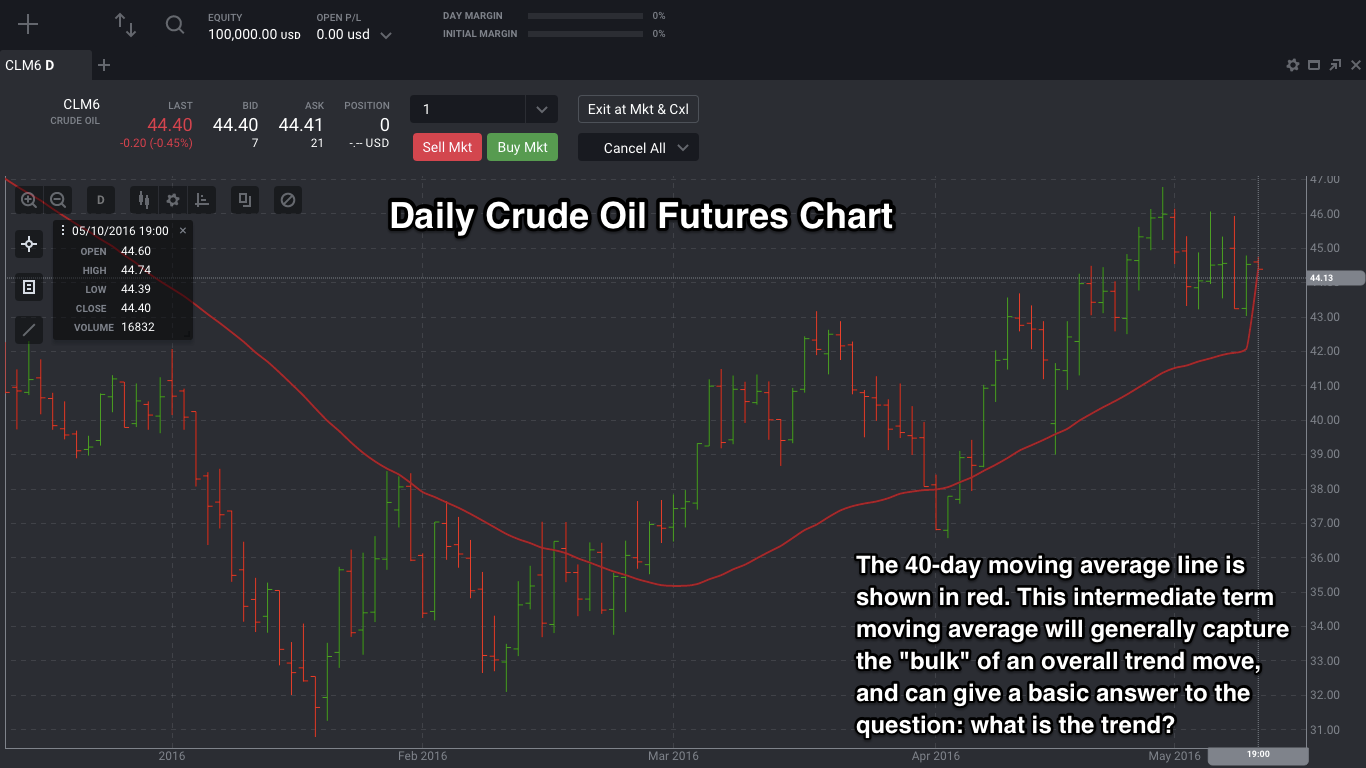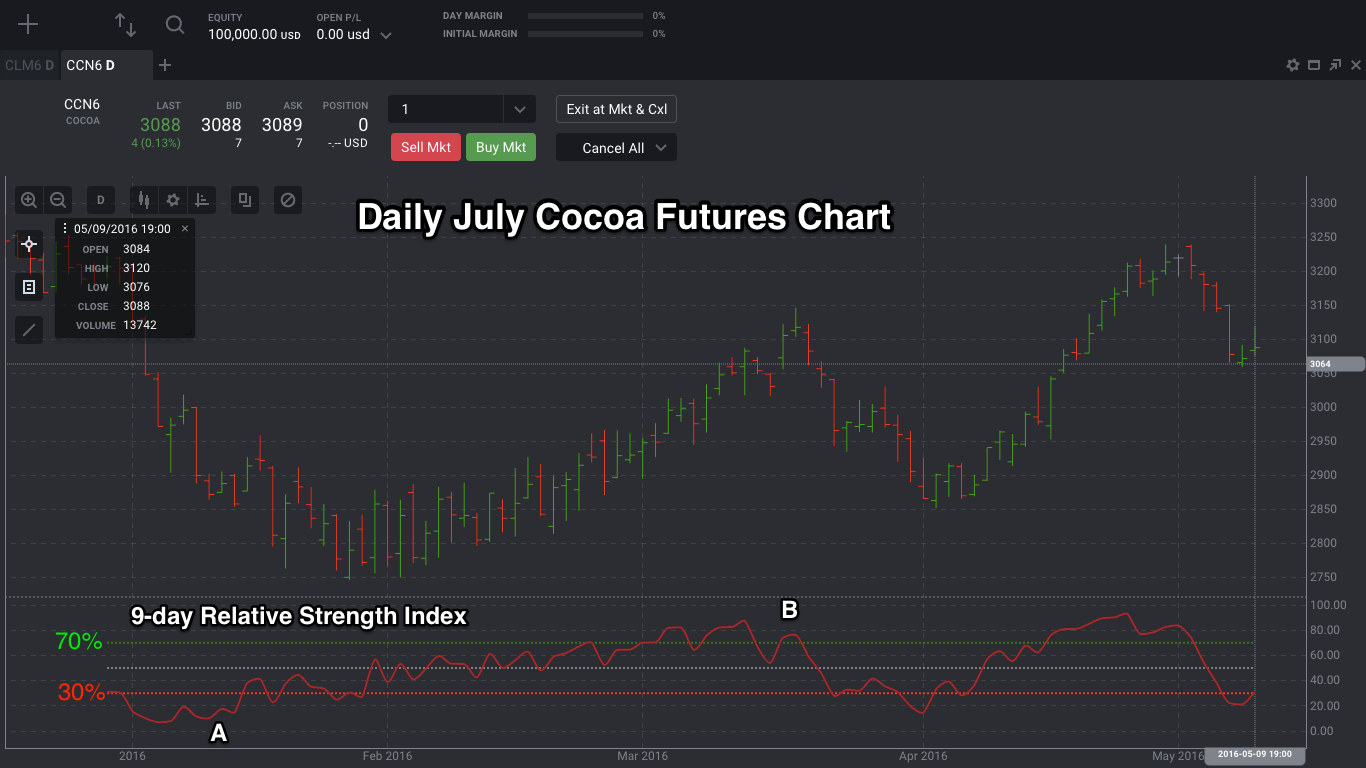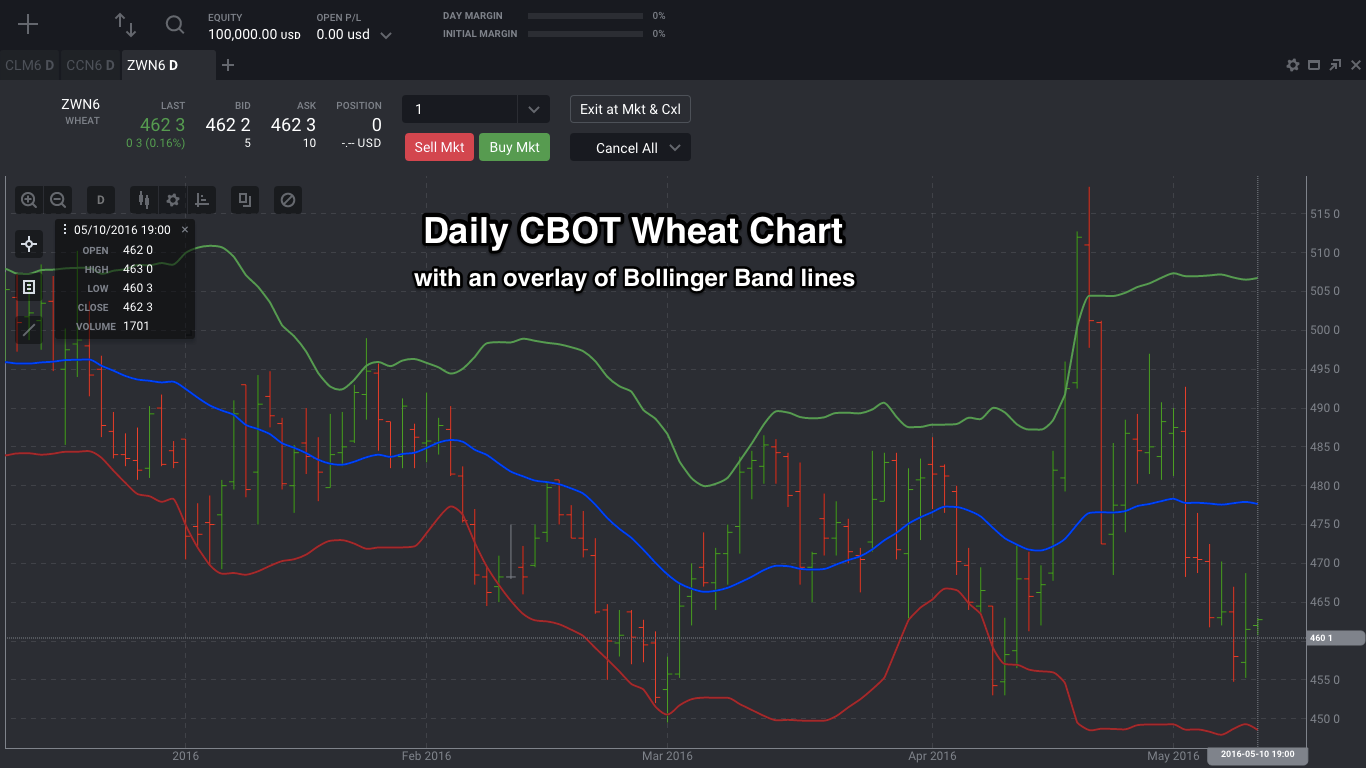
Win or lose everybody gets what they want out of the market, or so Ed Seykota famously said to author Jack Schwager for his first Market Wizards book. What do you want to get out of futures trading? If you are looking for thrills and excitement, go take a roller coaster ride. If you are looking for a business opportunity, write out a trading business plan.
The path to profitable trading may not be an easy journey and there will likely be some boulders and challenges along the way. But, successful traders point to a number of variables that helped them on their path. Not having a well-defined trading methodology can be problematic when it comes to trading. Every trader needs to figure out what works for him or her, test a methodology, learn about indicators and explore potential set-ups to trade.
Here's a look at my three favorite technical indicators that I will put on just about any futures chart I'm analyzing.
- What's the trend? Moving averages are a simple, but effective technical tool to help you quickly identify the trend. It is important for traders to understand that moving averages are a lagging indicator (based on the way that they are constructed). Trend traders will never capture absolute tops or bottoms with moving average signals, but they can be an effective tool to capture roughly 2/3 to 3/4 of an overall market move.
Figure 1 below shows an example of a daily crude oil futures chart. The 40-day moving average is shown in red. The simple rule of thumb is if a market is below the 40-day moving average, the intermediate term trend is weak. On the flip side, if a market is above its 40-day moving average line, the trend is positive.
Some caveats to remember: at turning points or consolidations, moving averages can become less helpful. Seasoned traders generally don't use just one technical indicator to base a market decision. Relying on a number of indicators for "confirmation" of a trend or trend change can help increase the odds of a successful trade idea.

- Who's got the momentum: the bulls or bears? The relative strength index (RSI) is a popular and widely used momentum indicator. It can offer traders a basic idea on who is in control of the current trend and how strong the momentum is behind the move. There are two main "zones" to monitor the 70% line (which is considered overbought) and the 30% line (which is considered oversold). Let's take a look at the daily cocoa futures chart below to see how this works.

In January at point "A" daily momentum hit so-called "oversold" levels below the 30% line. That revealed that bearish fatigue was setting in for the cocoa market. Momentum began to trend higher and cocoa futures posted healthy gains into mid-March. A bearish momentum divergence formed at the March 18 high from overbought levels (above the 70% line), marked at point "B". (A bearish momentum divergence occurs when price hits a new high, but that is not confirmed by a new high reading in the momentum indicator). This revealed that cocoa was vulnerable to a potential consolidation or downside correction phase, or that the bears had gained control of momentum. A corrective pullback phase followed in this instance.
- Deciphering a sideways market. The technical indicator: Bollinger Bands® has many uses and different traders use bands in different ways. One approach to using these bands are to decipher clues in a choppy or neutral trading environments. A daily wheat futures chart is shown below with an overlay of Bollinger Band lines.
How can they be used? One approach that some technical traders use in a choppy, neutral market is to monitor action around the middle Bollinger Band line (seen here in Figure 3 in blue). As the price of wheat dips below the middle Bollinger Band line, some technical traders view that as a signal to turn bearish, with a potential price target at the lower line (seen in red). On the flip side, as the price of wheat turns higher above the middle line, some traders view that as a bullish signal, with a potential target at the upper line.

Find the indicators that work for you. There are a plethora of technical indicators to study and apply to futures charts. Don't get sucked into indicator overload. Find a few indicators that you like, determine how they can help in your analysis of potential trading set-ups and try paper trading the signals. Use a demo account to try out a new trading approach, before you commit real money.
Remember trading is a business. Lay out your business plan, including the specifics of your trading methodology.
- What indicators do you use?
- What signals do you need for a trade entry?
- Where will you place your stop-loss?
- What is your target?
- Write this down and post it near your trading computer.
Do your homework, and approach the markets like a business. This could help you on your way to getting exactly what you want out of the markets, just like Ed Seykota says.


